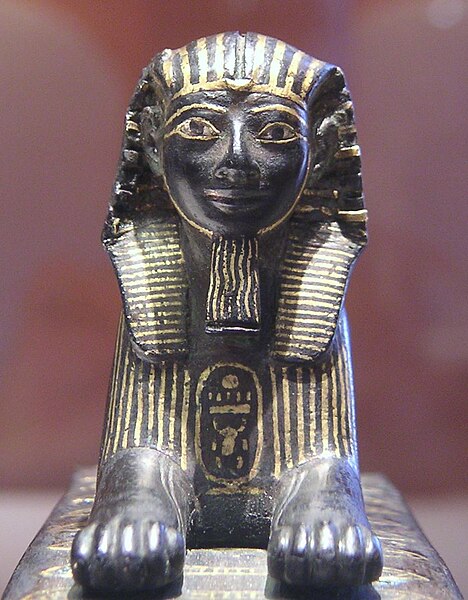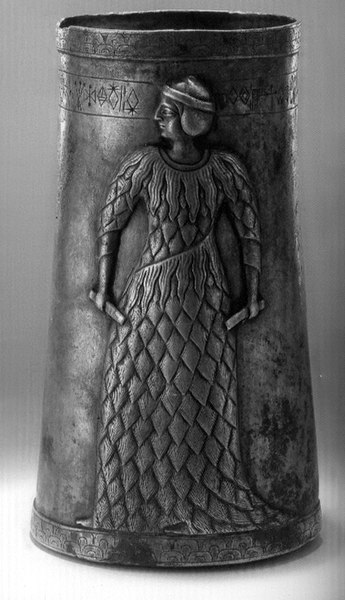The Jiroft culture, also known as the Intercultural style or the Halilrud style, is an early Bronze Age archaeological culture, located in the territory of present-day Sistan and Baluchestan and Kermān Provinces of Iran.
Master of animals in chlorite, Jiroft, Kerman ca. 2500 BC, Bronze Age I, National Museum of Iran
Jiroft vase, 2800-2300 BC
Jiroft vase, 2800-2300 BC
Jiroft statuette, 2800-2300 BC
The Bronze Age is a historical period lasting from approximately 3300 to 1200 BC. It is characterized by the use of bronze, the use of writing in some areas, and other features of early urban civilization. The Bronze Age is the middle principal period of the three-age system, between the Stone and Iron Ages. This system was proposed in 1836 by Christian Jürgensen Thomsen for classifying and studying ancient societies and history. Worldwide, the Bronze Age generally followed the Neolithic period, with the Chalcolithic serving as a transition.
One of the Alaca Höyük bronze standards from a pre-Hittite tomb dating to the third millennium BC, from the Museum of Anatolian Civilizations, Ankara
Hittite bronze tablet from Çorum-Boğazköy dating from 1235 BC, Museum of Anatolian Civilizations, Ankara
Sphinx-lion of Thutmose III 1479–1425 BC
Late 3rd Millennium BC silver cup from Marvdasht, Fars, with linear-Elamite inscription








